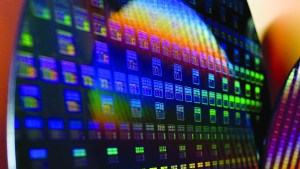
Manufacturing has been a declining activity in the US for decades. As a result, the country has become largely dependent on foreign sources for many critical technology products that underlie industrial and military systems.
Semiconductors (chips) are among these key products. During this period of decline, US domestic production of semiconductors has dropped to less than 10% of world capacity. Most of the highest-performance devices critical to commercial, government and military systems are manufactured overseas.
Manufacturing migrated overseas because US companies perceived significant production cost reductions and because they wished to avoid costly capital investments that required long-term production commitments.
Now that the strategic drawbacks of overseas production have become evident, bringing back strategic industry manufacturing to the US is a hot topic. But how likely is this for the semiconductor industry?
There are at least three requirements to consider for such a strategy to be successful long-term. First, large amounts of capital for facility building are needed; second, the factories must be cost-competitive on a global basis; and three, the products must be technologically competitive if not superior.
Recognizing the importance of reviving the industry domestically, the US government passed the CHIPS Act that provides federal funding of $54.2 billion to finance chip production facilities. The CHIPS Act funding is intended to address the capital cost requirements of building new production facilities for advanced semiconductors.
However, this amount only addresses part of the capital needs. A recent analysis by International Business Strategies Inc suggests that for the US to become self-sufficient in high-performance computing devices, about $205 billion will be needed for production facilities.
The second issue of production costs is a big one. Taiwan Semiconductor Manufacturing Company (TSMC) and Samsung, which have indicated an interest in building plants in the US, estimate that production costs will be 30% higher in America than in comparable high-end plants in Taiwan or South Korea.
Customers will not pay such a premium if international sources are available, dooming the viability of the new plants unless they offer outstanding products.
On the third issue, the pace of innovation needs to be increased. The US lost a lot of the research and development infrastructure that involved academic institutions and corporations that in the past was a prime source of innovations that fueled the growth of the US industry. Such an infrastructure would have to be rebuilt.
There is clearly a massive number of activities needed to bring the industry back, with the government playing a key role and corporations strongly participating. The CHIPS Act is the start of a new industrial policy to support strategic industries. David Goldman has outlined the initiatives that can help make it successful in a recent monograph for the Claremont Institute.
Looking at these estimates leads to the conclusion that the reshoring of major capital-intensive industries is unlikely to succeed without at the same time having the ability to manufacture innovative, unique products that can command premium prices.
While foreign companies such as TSMC or Samsung will build US plants, they will probably keep in their most innovative technologies in their own countries. This understandable national strategy means that the future of the industry in the US will be determined by local innovations and local plants dedicated to commercializing them. This means funding research and development with capital to move into production.
There is no alternative to rebuilding the US ability to be the location for innovation in product design and production – this is what built the industry in the first place, and a return to government and corporate strategies with that focus is the only long-term answer to sustaining technological leadership. Just replicating foreign plant technologies is not the path to the needed restoration of technological leadership.
Henry Kressel is a technologist, inventor, author and long term private equity investor. He has conducted pioneering research and development of semiconductors including transistors, integrated circuits and lasers.

